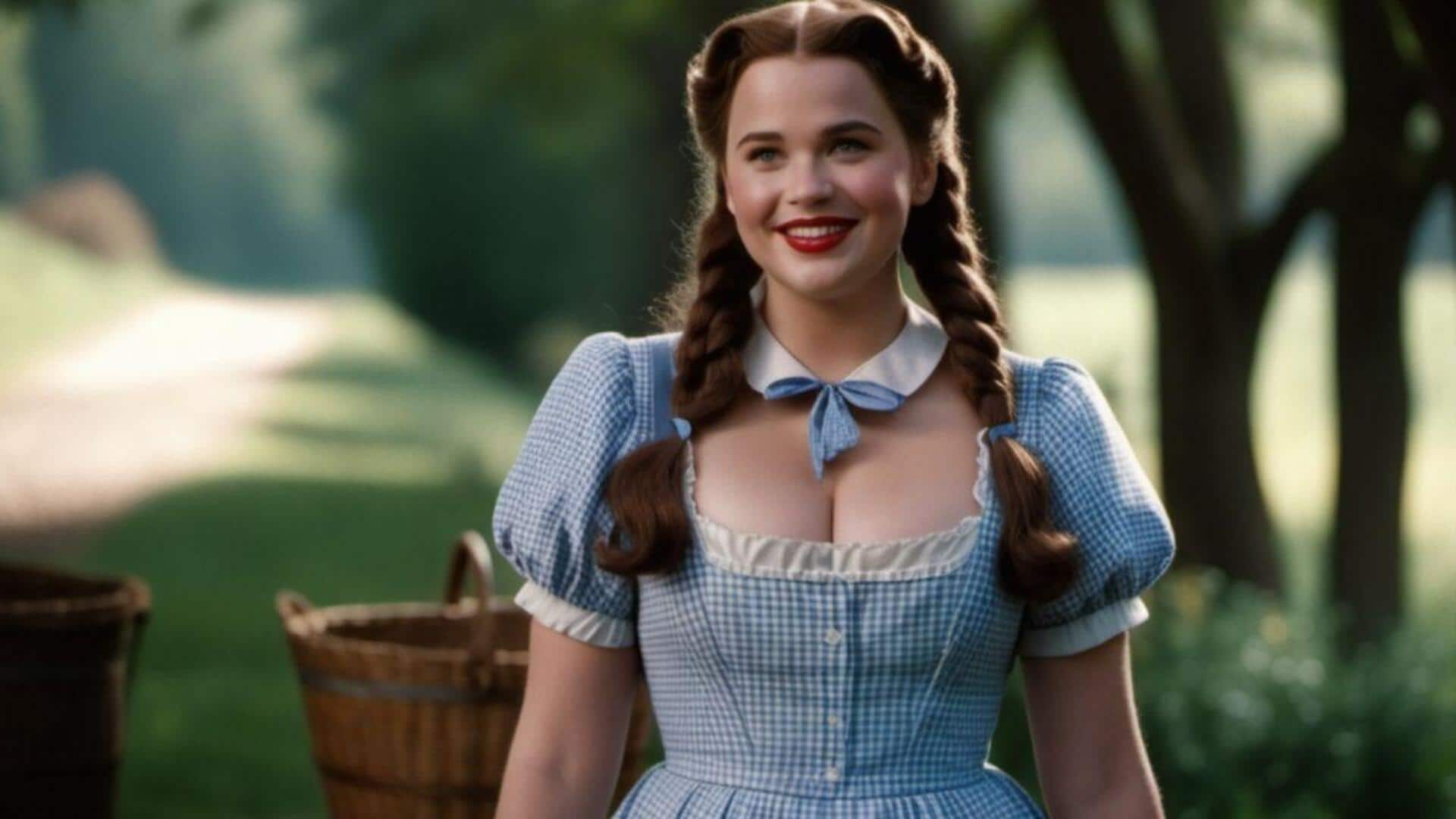
How Dorothy Gale evolved with America's changing cinema
What's the story
From the very first time she appeared on screen to the latest adaptation, Dorothy Gale, the beloved character from The Wizard of Oz, has seen some significant changes in US cinema over the decades. From reflecting the changing values of society to how the cinema itself has evolved, Dorothy's story is a reflection of the time. Here's a look.
Original portrayal
'The Wizard of Oz' 1939 classic
In the 1939 film The Wizard of Oz, Judy Garland brought Dorothy Gale to life with an innocence and sense of wonder. This version highlighted her journey from Kansas to the magical land of Oz and themes of friendship and self-discovery. The film's success cemented Dorothy as a beloved figure in American culture, setting a high standard for future portrayals.
Contemporary adaptations
Modern reinterpretations
In recent years, filmmakers have reimagined Dorothy Gale with new eyes. While these adaptations often dive into more complicated stories, they stay true to core elements like courage and resilience. By adding new storylines or settings, these films attempt to connect with modern audiences while paying tribute to the original essence of Dorothy's character.
Visual Innovations
Technological advancements impacting portrayal
It has been technological advancements that have also been instrumental in evolving Dorothy's portrayal on screen. From early color cinematography in 1939 to modern CGI effects, every technological leap has enabled filmmakers to create more immersive versions of Oz. From what it seems, these innovations enhance storytelling by providing visually stunning backdrops that complement Dorothy's adventures.
Societal influence
Cultural shifts reflected through character
As society evolves through the ages, so does its reflection through characters like Dorothy Gale. Her evolution reflects broader cultural shifts in gender roles and empowerment narratives in cinema history. Filmmakers adapt elements like dialogue and plotlines to reflect the social norms of different eras. This helps audiences connect with the timeless heroine across generations. At the same time, they preserve the original essence that makes her an enduring and relatable figure today.